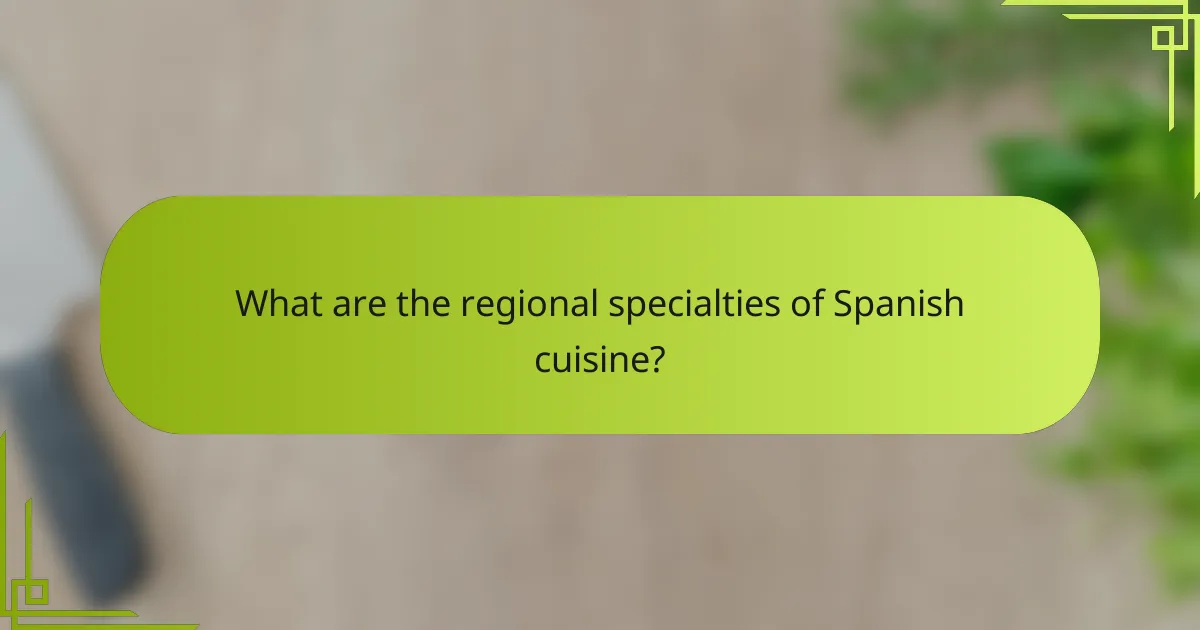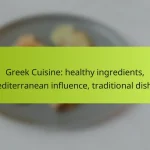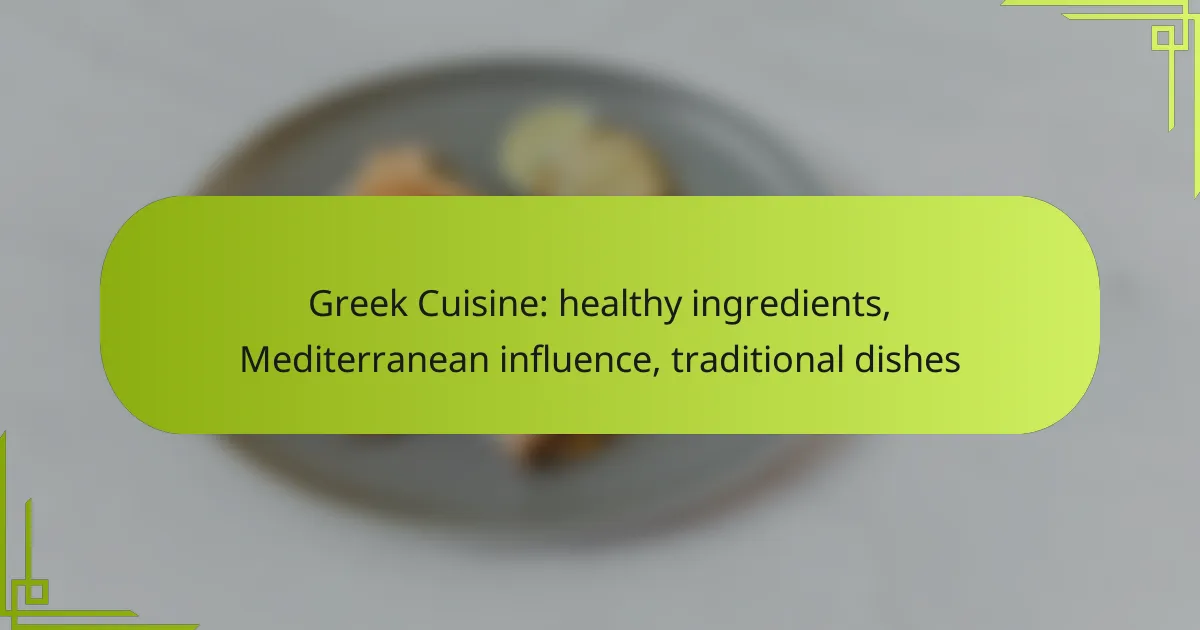Spanish cuisine is renowned for its vibrant tapas culture, where small plates of diverse regional specialties invite communal dining and shared experiences. Each dish, from Patatas Bravas to Jamon Iberico, showcases local ingredients and culinary traditions, creating a rich tapestry of flavors that reflect Spain’s cultural diversity. This emphasis on sharing not only enhances the dining experience but also fosters a sense of togetherness among friends and family.

What are the best tapas dishes in Canada?
In Canada, some of the best tapas dishes reflect traditional Spanish flavors while incorporating local ingredients. Popular choices include Patatas Bravas, Gambas al Ajillo, Chorizo al Vino, Pan con Tomate, and Jamon Iberico, each offering a unique taste of Spanish cuisine.
Patatas Bravas
Patatas Bravas are crispy fried potatoes served with a spicy tomato sauce or aioli. This dish is a staple in Spanish tapas bars and has gained popularity in Canada for its comforting texture and bold flavors. When ordering, look for variations that may include different sauces or toppings, enhancing the traditional recipe.
For a homemade version, cut potatoes into cubes, fry until golden, and toss with a mix of diced tomatoes, garlic, and chili for the sauce. Serve them hot for the best experience.
Gambas al Ajillo
Gambas al Ajillo features shrimp sautéed in olive oil with garlic and red pepper flakes, delivering a rich and aromatic flavor. This dish is quick to prepare and is often served sizzling in a small skillet, making it a delightful addition to any tapas spread.
When enjoying Gambas al Ajillo, consider pairing it with crusty bread to soak up the flavorful oil. Freshness is key, so opt for sustainably sourced shrimp whenever possible.
Chorizo al Vino
Chorizo al Vino consists of Spanish chorizo sausage cooked in red wine, resulting in a savory and slightly tangy dish. This tapas option is hearty and pairs well with a variety of wines, making it a favorite among diners looking for robust flavors.
To prepare, slice the chorizo and simmer it in a good-quality red wine until it absorbs the flavors. Serve it warm, garnished with fresh herbs for an added touch.
Pan con Tomate
Pan con Tomate is a simple yet flavorful dish made with toasted bread topped with ripe tomatoes, garlic, and olive oil. This tapas item highlights the quality of ingredients, making it a refreshing choice for any meal.
For the best results, use a rustic bread and ripe, juicy tomatoes. Rub the garlic on the toasted bread before adding the tomato mixture for an extra kick of flavor.
Jamon Iberico
Jamon Iberico is a premium cured ham that is often considered the pinnacle of Spanish charcuterie. It is known for its rich flavor and melt-in-your-mouth texture, making it a luxurious addition to any tapas platter.
When serving Jamon Iberico, slice it thinly and pair it with olives, cheese, or bread. Look for authentic varieties that are certified to ensure quality and flavor, often available in specialty shops across Canada.

How does communal dining enhance the tapas experience?
Communal dining significantly enhances the tapas experience by fostering a sense of togetherness and interaction among diners. Sharing small plates encourages social engagement, making meals more enjoyable and memorable.
Encourages sharing and conversation
Sharing tapas naturally leads to conversation as diners discuss the various dishes they are trying. This interaction can create a more relaxed and friendly atmosphere, where people feel comfortable engaging with one another. For example, trying a new dish together can spark discussions about flavors and preferences, deepening connections.
To maximize this aspect, consider ordering a variety of dishes that cater to different tastes. This not only promotes sharing but also invites diverse opinions, enhancing the overall dining experience.
Creates a festive atmosphere
The communal nature of tapas dining contributes to a lively and festive atmosphere, often reminiscent of celebrations. The act of sharing food can evoke feelings of joy and camaraderie, making meals feel like special occasions. In Spain, tapas bars are often bustling with energy, where laughter and conversation fill the air.
To create a similar atmosphere at home or in a gathering, consider setting up a tapas-style buffet where guests can freely choose and share dishes. This setup encourages movement and interaction, making the dining experience more dynamic and enjoyable.

What are the regional specialties of Spanish cuisine?
Spanish cuisine is rich in regional specialties that reflect the diverse cultures and traditions across the country. Each region boasts unique dishes that highlight local ingredients and culinary techniques, making Spanish cuisine a vibrant tapestry of flavors.
Paella from Valencia
Paella is a signature dish from Valencia, known for its vibrant saffron-infused rice and a variety of ingredients. Traditional versions often include rabbit, chicken, and a mix of vegetables, while seafood variations feature fresh fish and shellfish. The key to a great paella lies in the socarrat, the crispy layer of rice at the bottom of the pan.
When preparing paella, use a wide, shallow pan to ensure even cooking and avoid stirring once the liquid is added. Serve it directly from the pan for a communal dining experience, and pair it with a refreshing glass of local wine or a cold beer.
Pintxos from Basque Country
Pintxos are small snacks or appetizers originating from the Basque Country, typically served on a skewer or atop a slice of bread. These bite-sized delights can include a variety of ingredients, such as cured meats, seafood, and vegetables, often garnished with a toothpick. Pintxos are a staple of Basque social culture, encouraging sharing and sampling.
To enjoy pintxos, visit a local bar where they are displayed on the counter. Diners can select their favorites and pay based on the number of toothpicks collected. This informal dining style promotes a lively atmosphere and allows for tasting a wide range of flavors in one outing.
Gazpacho from Andalusia
Gazpacho is a cold soup that hails from Andalusia, perfect for hot summer days. Made primarily from blended tomatoes, cucumbers, peppers, onions, and garlic, this refreshing dish is seasoned with olive oil, vinegar, and salt. Gazpacho is not only delicious but also packed with vitamins and nutrients.
For the best flavor, use ripe, seasonal tomatoes and allow the soup to chill for several hours before serving. Garnish with diced vegetables or croutons for added texture. Gazpacho can be enjoyed as an appetizer or a light meal, making it a versatile option in Spanish cuisine.

How to choose the right tapas for your gathering?
Selecting the right tapas for your gathering involves considering the preferences of your guests and the overall theme of the event. Aim for a diverse selection that caters to various tastes and dietary needs to ensure everyone enjoys the experience.
Consider dietary restrictions
Understanding dietary restrictions is crucial when choosing tapas. Common restrictions include vegetarian, vegan, gluten-free, and allergies to nuts or shellfish. Always ask your guests ahead of time about their dietary needs to avoid any issues during the gathering.
For instance, if you have vegetarian guests, include options like patatas bravas or stuffed peppers. For gluten-free options, consider dishes like grilled vegetables or olives. Labeling each dish can also help guests make informed choices.
Balance flavors and textures
Balancing flavors and textures enhances the tapas experience. Aim for a mix of savory, sweet, spicy, and tangy dishes, along with a variety of textures, from crunchy to creamy. This variety keeps the palate engaged and encourages communal sharing.
For example, pair crispy calamari with a creamy aioli and a refreshing gazpacho. Including a range of meats, cheeses, and vegetables can create a well-rounded selection that appeals to different tastes. Consider serving a mix of hot and cold tapas to further enhance the dining experience.

What are the key ingredients in traditional Spanish tapas?
Traditional Spanish tapas are characterized by a variety of key ingredients that enhance their flavor and appeal. The most essential components include olive oil, garlic, and a range of fresh vegetables, meats, and cheeses that reflect Spain’s diverse culinary regions.
Olive oil
Olive oil is a cornerstone of Spanish cuisine and is particularly vital in tapas preparation. It is often used for frying, drizzling, or as a base for dressings, contributing rich flavor and healthy fats. Extra virgin olive oil is preferred for its superior taste and quality.
When selecting olive oil for tapas, look for options labeled as “extra virgin,” which indicates the highest quality. Spanish olive oils, especially those from regions like Andalusia, are renowned for their robust flavors, making them ideal for enhancing dishes like patatas bravas or pan con tomate.
Garlic
Garlic is another fundamental ingredient in traditional Spanish tapas, providing depth and aroma to many dishes. It can be used fresh, roasted, or sautéed, and is often paired with olive oil to create flavorful sauces and marinades.
In tapas, garlic is commonly featured in dishes such as gambas al ajillo (garlic shrimp) and alioli (a garlic mayonnaise). When using garlic, consider balancing its intensity with other ingredients to avoid overpowering the dish, ensuring a harmonious flavor profile.










